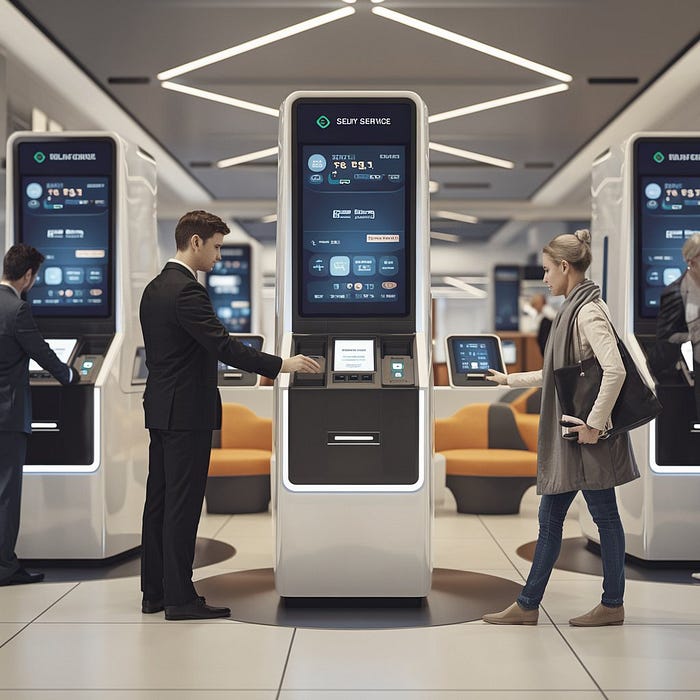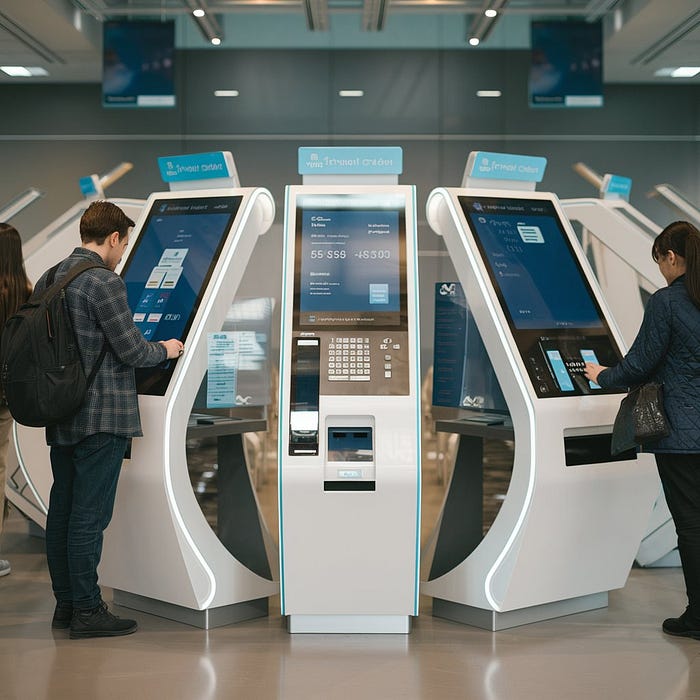How to choose the best self-service banking kiosk for your branch

In today’s rapidly evolving banking landscape, self-service banking kiosks have emerged as a crucial component in enhancing customer experience and optimizing branch operations. As customer expectations shift toward convenience, speed, and digital accessibility, banking institutions must innovate to remain competitive. Self-service kiosks empower customers to perform everyday banking tasks independently, reduce wait times, and free up branch staff for higher-value services. This technological advancement not only boosts customer satisfaction but also contributes to operational efficiency and cost savings.
Assessing Branch Needs and Customer Demographics
Before investing in self-service banking kiosks, it’s essential for financial institutions to assess the specific needs of each branch and understand their customer base.
Analyzing Branch Foot Traffic and Transaction Types
Start by evaluating branch traffic patterns to identify peak hours and common transaction types. High footfall during specific hours may justify deploying multiple kiosks to avoid bottlenecks. Understanding the frequency of transactions such as cash withdrawals, deposits, balance inquiries, or bill payments helps in selecting kiosks with the right capabilities.
Understanding Customer Preferences and Accessibility Requirements
Different branches serve diverse customer segments, including elderly users, tech-savvy millennials, and customers with disabilities. Accessibility features such as screen readers, Braille keypads, height-adjustable screens, and voice assistance can significantly enhance user experience and inclusivity. In regions with multilingual populations, offering multi-language support is also crucial.
Key Features to Look for in a Self-Service Banking Kiosk
The effectiveness of a self-service banking kiosk hinges on its technical specifications and user-friendly design. Here are the key features that banks should prioritize.
Security Measures and Compliance Standards
Security is paramount in financial transactions. Look for kiosks equipped with EMV-compliant card readers, end-to-end encryption, anti-skimming technology, and biometric authentication. Compliance with data protection regulations such as GDPR or PCI-DSS is essential to avoid legal and reputational risks.
User Interface and Experience Design
A well-designed user interface ensures seamless navigation. Kiosks should feature responsive touchscreens, intuitive menus, clear instructions, and minimal steps to complete transactions. The interface should also support multi-language options and cater to users with different levels of digital literacy.
Integration Capabilities with Bank Systems
A kiosk should integrate smoothly with core banking systems, CRM platforms, and transaction databases. Real-time data synchronization enables customers to view updated account information, complete real-time transfers, and receive instant confirmations. Compatibility with mobile banking apps and card issuance systems is an added advantage.
Maintenance and Technical Support Options
Reliable technical support and maintenance plans are crucial to minimize downtime. Choose vendors that offer remote diagnostics, automatic software updates, and 24/7 customer support. Easy-to-replace components and modular designs simplify on-site repairs and reduce operational disruption.
Comparing Different Types of Self-Service Kiosks
The market offers a variety of kiosk models designed to meet different banking needs. Understanding these types can help in making an informed decision.

Cash Deposit and Withdrawal Kiosks
These kiosks are designed for quick and secure handling of cash transactions. Key considerations include note validation technology, counterfeit detection, deposit envelope options, and high-capacity cassettes for busy locations. Some models also support coin handling.
Document Processing and Verification Kiosks
Ideal for onboarding and verification tasks, these kiosks can scan IDs, take photographs, process signatures, and verify documents. They streamline KYC processes and reduce the need for teller intervention.
Multi-Function Kiosks with Advanced Features
These versatile kiosks support a broad range of services such as account opening, fund transfers, utility bill payments, card printing, and loan applications. They are suited for high-traffic branches aiming to reduce operational load and enhance customer self-service.
Evaluating Costs and ROI for Banking Kiosk Investment
While the benefits of kiosks are clear, it’s essential to conduct a cost-benefit analysis to ensure a worthwhile investment.
Initial Purchase and Installation Costs
Factors affecting initial costs include hardware capabilities, kiosk customization, installation complexity, and software licenses. Advanced features like biometric authentication or cash recycling increase the price but offer long-term benefits.
Operational Expenses and Maintenance Fees
Ongoing costs include regular maintenance, software updates, support contracts, electricity consumption, and spare parts. Predictable service agreements with vendors can help control long-term expenses.
Calculating Efficiency Gains and Customer Satisfaction Benefits
Track metrics such as reduced average transaction time, decline in branch queue lengths, teller workload reduction, and increased transaction volume per day. Improved customer satisfaction scores and faster service delivery directly contribute to ROI.
Implementation Best Practices and Staff Training
A successful kiosk rollout requires strategic planning and staff involvement to ensure smooth adoption and maximum utilization.
Planning the Physical Setup and Security Measures
Careful site selection enhances usability and security. Place kiosks in visible, easily accessible areas with proper lighting. Install surveillance cameras and secure the kiosk housing to prevent tampering or theft.
Training Staff to Assist Customers with Kiosk Use
Educate branch staff on kiosk functions so they can assist and encourage customers to use them. This reduces hesitancy, especially among first-time users or elderly customers, and fosters a culture of digital adoption.
Gathering Customer Feedback and Iterating Improvements
Use surveys, direct feedback, and usage analytics to identify areas for improvement. Regular updates based on user behavior and pain points can help optimize kiosk performance and customer satisfaction.
Conclusion
Choosing the right self-service banking kiosk involves a careful analysis of branch-specific needs, customer preferences, technical features, and cost implications. From security and integration to accessibility and staff training, every aspect plays a role in ensuring a successful deployment. When implemented effectively, self-service kiosks can revolutionize banking operations — enhancing customer experience, improving operational efficiency, and delivering measurable returns on investment.
Comments
Post a Comment